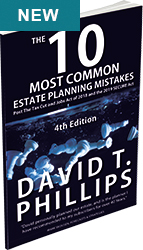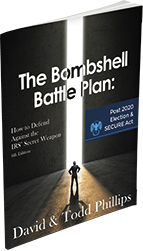
Bob Carlson - Retirement Watch
Bob Carlson's - August 2013

A Fiscal Pain for Many Retired Americans
A fiscal pain for many retired Americans are required minimum distributions from traditional IRAs and other qualified retirement plans. Calculating the distributions and withdrawing the money are chores. People worry about making a mistake that will trigger the 50% penalty. The problems are likely to get worse in coming years as Congress grabs for more revenue.
The tax code requires you to begin distributions after age 70.5, whether you need the cash or not. Each year as you get older, the RMD schedule increases the percentage of the IRA that must be distributed. That's fine when your spending needs equal or exceed the RMDs. But many people have multiple sources of income and large IRAs. They don't need all of the forced distributions. The distributions increase income taxes and can push you into a higher income bracket that triggers higher Medicare premiums and other problems. Many people simply want to let their IRAs accumulate so they can serve as emergency spending accounts or legacies for their heirs.
Bob Carlson's - November 2015

Dear Reader:
Forecasts and predictions will pour forth in the next few months. It’s the time of the year when the financial media are filled with the experts telling us what next year is going to be like. Also, many experts will issue their own detailed forecasts for 2016. Ignore these predictions or treat them as entertainment.
Before considering new forecasts, take a look at past forecasts. You won’t find too many from last year that were very accurate.
For example, a widely-promoted forecast the last few years said the recent federal legislation on foreign bank accounts would cause a collapse of the dollar almost overnight. Readers of the forecast were urged to buy gold and other non-dollar assets. The legislation went into effect and caused disruptions for some people and banks, but it didn’t cause any of the serious effects in the forecast. The dollar’s done quite well while gold’s declined.
Retirement Watch June 2014 - Long Term Care Crisis

HEALTH WATCH:
Prevailing in the Long-Term Care Crisis
The good news about long-term care is that the cost is rising at a slower rate. Yet, LTC still is ex-pensive and its cost is rising at a faster rate than general inflation.
The latest annual Cost of Care Survey from Genworth, the leading LTC insurer, at www.genworth.com, found that when LTC is needed the average length of care is about three years.
Read more: Retirement Watch June 2014 - Long Term Care Crisis
Winning the War on Stretch IRAs

"Call 888-892-1102 to order the new Required Minimum Distribution Leverage Strategy Special Report for $10.00,
which includes a personalized illustration kit!"
Preserving IRA wealth for children and other younger beneficiaries is a goal of many people. That’s because a large percentage of their wealth is in IRAs and other qualified retirement plans. Two forces, however, stand in opposition to that goal and need to be defeated.
One force is the required minimum distributions (RMDs). After age 70½, annual distributions must be taken from most IRAs and other qualified retirement plans. These are designed to steadily deplete an IRA during the owner’s lifetime, and the percentage of the IRA that must be distributed each year increases. See our March 2015 visit for details about RMDs.
Bob Carlson - RMD Pain to Gain

IRA WATCH:
Turning RMD Pain into Gain
A fiscal pain for many retired Americans are required minimum distributions from traditional IRAs and other qualified retirement plans. Calculating the distributions and withdrawing the money are chores. People worry about making a mistake that will trigger the 50% penalty. The problems are likely to get worse in coming years as Congress grabs for more revenue.
Bob Carlson - IRA with a TWIST

IRA WATCH:
Preserving Your IRA to Last for Heirs
IRAs and other qualified retirement plans are high on the list of today's greatest planning concerns. They are among the most valuable assets in many households, and people often are worried about what will happen to their IRAs and 401(k)s. They want the IRAs to last their lifetimes and beyond. The IRAs are supposed to help not only their spouses but also children and, hopefully, grandchildren.
Standing in the way are taxes.
Bob Carlson - Investing When Rates are Low, Poised to Rise

Investing when Rates are Low, Poised to Rise
What do you do when interest rates are low but the Federal Reserve makes clear it is going to start raising rates? Now, you earn very little money from cash and safe investments. Bonds and similar investments have higher yields, but they're going to lose value when interest rates rise. In many cases, principal losses from rate increases will more than wipe out the higher yields. Today's historic interest rate situation is a difficult one for investors.
Read more: Bob Carlson - Investing When Rates are Low, Poised to Rise
Bob Carlson - Finding Safe, Guaranteed Income

Annuity Watch:
Finding Safe, Guaranteed Income
Money is pouring into index annuities at a rapid rate. They're the annuities with the highest sales for most recent years. It's not surprising. An index annuity is a good place for some investment dollars. You have the potential to earn a higher return than traditional safe investments but are guaranteed both a minimum return and return of your principal. The better the stock market does, the higher your return is, but you don't share in stock market losses.
Bob Carlson's - September 2015

Investing when Rates are Low, Poised to Rise
What do you do when interest rates are low but the Federal Reserve makes clear it is going to start raising rates? Now, you earn very little money from cash and safe investments. Bonds and similar investments have higher yields, but they're going to lose value when interest rates rise. In many cases, principal losses from rate increases will more than wipe out the higher yields. Today's historic interest rate situation is a difficult one for investors.
Making decisions even more difficult is that interest rates aren't likely to rise rapidly. The decision would be easier if we were on a fast path to normal interest rates. We could hide in cash for a year or two until rates were much higher, and then consider buying high-yielding investments. But I expect rates will rise slowly over several years, because the Fed can't afford to raise rates too quickly. It might damage the economy.
Investors want to know what to do with the bond or income portions of their portfolios in this environment. They want to be diversified so all their investments aren't in stocks, but they don't want to lock in almost guaranteed losses in bonds as rates rise over the next few years.
Bob Carlson's - September 2016

Two Ways to Avoid IRA RMDs with No Out-of-Pocket Cost
We’ve been in the vanguard of showing owners of traditional IRAs how to maximize the after-tax value of the IRAs left to heirs. We do that by minimizing or avoiding required minimum distributions (RMDs) and searching for ways to turn IRAs into tax-free, guaranteed money. In the past, I’ve shown you several strategies that achieve these goals. (See our May and November 2015 issues for examples of these strategies.) Here are two new strategies to consider.
First, I’ll advise these strategies aren’t for everyone. They primarily are for people with substantial IRAs who have enough income and assets outside the IRAs to pay their retirement living expenses. Often they view their IRAs as emergency funds and something to be left for their loved ones.
The first strategy is known as The IRA Reboot. The Reboot is an alternative to converting to a Roth IRA. The important difference is you have no out-of-pocket cost with the IRA Reboot. When a traditional IRA is converted to a Roth IRA, you include the converted amount in gross income and pay taxes as though that amount were distributed to you. With the Reboot, you use several tax code provisions and a special type of life insurance policy to avoid paying the taxes out-of-pocket.




